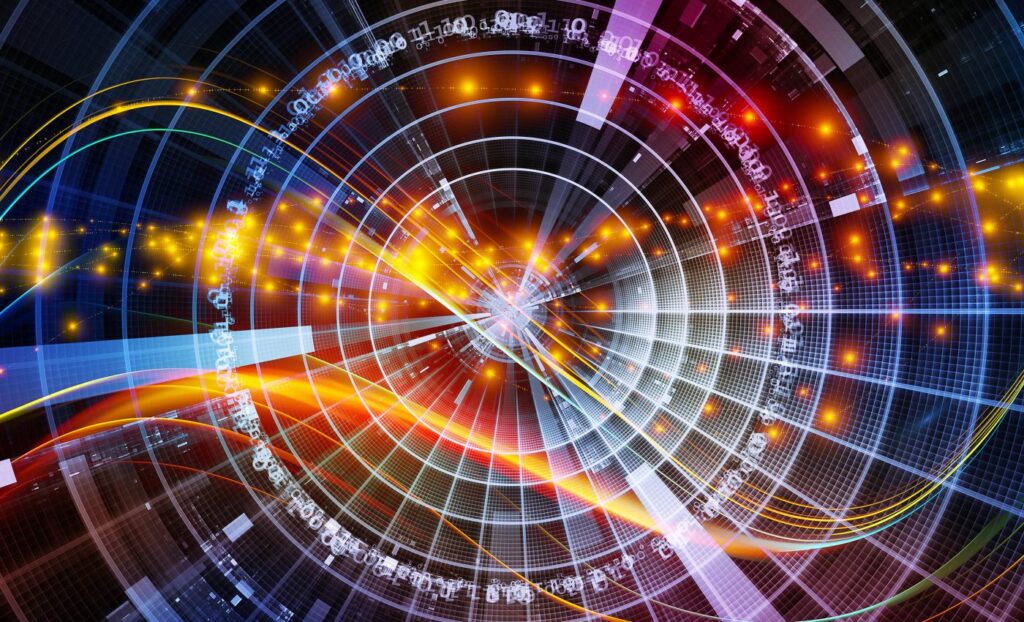In a groundbreaking twist that could revolutionize our understanding of the universe, quantum internet technology is beginning to challenge the foundations laid by Albert Einstein and his theory of general relativity. For over a century, physics has operated on a split screen: quantum mechanics on one side and relativity on the other. But now, a convergence is emerging one that could unlock a unified theory of reality.
The Incompatibility of Giants: Quantum Mechanics vs General Relativity
Einstein’s general relativity beautifully describes gravity, mass, and the curvature of space time on a cosmic scale. On the other hand, quantum mechanics governs the microscopic world from electrons to quarks with unmatched precision. But their coexistence has long puzzled scientists. The math of one breaks the rules of the other.
This schism means we’ve never had a complete theory of everything until now, perhaps. Recent advancements in quantum internet technology are opening doors to experimental frameworks where both quantum principles and relativistic effects must be considered simultaneously.
Bridging the Divide: How Quantum Internet Enters the Equation
At its core, quantum internet technology involves the transmission of quantum bits (qubits) across vast distances, using quantum entanglement and superposition. Unlike classical bits that are either 0 or 1, qubits can exist in multiple states simultaneously. Even more intriguing is entanglement a phenomenon Einstein famously dubbed spooky action at a distance.
But what happens when entangled qubits are spread across moving satellites orbiting Earth? Suddenly, space time curvature and relativistic time dilation enter the conversation. This is where Einstein meets Schrödinger in a new experimental arena.
The Chinese Micius Satellite
A prime example of this convergence is China’s Micius satellite, launched in 2016. It became the world’s first quantum communication satellite and proved that quantum entanglement can be sustained across more than 1,200 kilometers between Earth and orbit.
The team behind Micius, led by physicist Jian Wei Pan, faced numerous challenges. They needed to ensure that the entangled particles didn’t decohere despite gravitational differentials and relativistic effects. Remarkably, they succeeded, proving that quantum internet technology can operate within relativistic domains.
This is more than secure communication it’s a window into the fundamental rules of the universe, says Dr. Pan. We are now studying how quantum information behaves under the influence of space time curvature.
Quantum Gravity Testing Ground?
Dr. Sabrina Gonzalez Pasterski, a theoretical physicist at Harvard, believes that quantum internet systems could serve as testbeds for theories of quantum gravity the holy grail of physics. Entangling particles across different gravitational potentials gives us a rare opportunity to probe where quantum mechanics and relativity intersect, she notes. “This could finally bring us closer to a unified framework.”
If quantum internet technology can account for relativistic effects in a practical, experimental setup, it may pave the way for the first testable models of quantum gravity long considered impossible due to scale limitations.
The Lab Where Space Time Bends
Dr. Emily Clarke, a quantum researcher at the University of Waterloo, shares her team’s challenges in simulating entangled particles across high altitude drones to mimic the effects of orbital motion.
It felt like we were building a bridge between Einstein and quantum theory, she says. “Each time we adjusted for time dilation, the entanglement degraded but not randomly. It hinted at a deeper connection between quantum state coherence and gravitational influence.”
Her insights not only further legitimize quantum networking as a tool for fundamental research but also reflect the emotional and intellectual gravity of confronting reality’s deepest laws in a lab setting.
Time, Light, and Information
The key concept binding these worlds is information how it’s transferred, observed, and preserved. In general relativity, information is bound by the speed of light and curved space time. In quantum mechanics, information behaves probabilistically and instantaneously in the case of entanglement.
Quantum internet technology may help reconcile this divide. By transmitting quantum information through entangled photons that experience differing gravitational effects, researchers can begin to map how quantum states evolve across curved space time.
This has profound implications, not just for physics, but for computing, cybersecurity, and even cosmology.
Applications Beyond Physics: A New Era of Communications
The impact of quantum internet technology goes far beyond academia. Governments and tech companies alike are investing billions in quantum secured communication systems. These systems promise to be immune to hacking, thanks to quantum key distribution (QKD), which immediately alerts users if a line is being eavesdropped on.
We’re not just building faster internets we’re building fundamentally different ones, says John Preskill, a renowned quantum information scientist at Caltech.
Imagine secure global networks, quantum cloud computing, and AI systems powered by quantum logic. All of this hinges on robust quantum communication and by extension, a deeper understanding of how quantum information behaves in a relativistic universe.
From Theory to Tangible Technology
While we are still in the early stages, the future of quantum internet technology looks incredibly promising. As quantum networks expand from Micius to NASA’s Artemis missions we will gather data on quantum states in varying gravitational environments.
This could eventually inform everything from space exploration to black hole information paradoxes. For the first time, we’re moving from blackboards and chalk to fiber optics and satellites.
Rewriting the Rules of Reality
The advent of quantum internet technology represents not just a leap in communication, but a fundamental shift in how we perceive reality. By functioning at the nexus of quantum theory and general relativity, it provides an experimental playground where the deepest mysteries of the cosmos can be unraveled.
As physicists, engineers, and dreamers come together to harness this incredible power, we may finally be on the brink of unifying the universe’s most elusive laws.
In the end, perhaps Einstein wasn’t wrong just incomplete. And it’s through the silent, invisible dance of entangled particles across space time that we’ll finish his equation.

